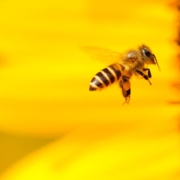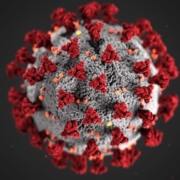EPA Advances Early Pesticides Protections for Endangered Species, Increases Regulatory Certainty for Agriculture
This original announcement was published by the EPA on November 16, 2022. Click here for more information.
Today, the U.S. Environmental Protection Agency (EPA) released an Endangered Species Act (ESA) Workplan Update that outlines major steps to increase protections for wildlife and regulatory certainty for pesticide users. The Workplan Update details how EPA will pursue protections for nontarget species, including federally listed endangered and threatened (i.e., listed) species, earlier in the process for pesticide registration review and other Federal Insecticide, Fungicide and Rodenticide Act (FIFRA) actions. These early protections will help EPA comply with the ESA, thus reducing the Agency’s legal vulnerability, providing farmers with more predictable access to pesticides, and simplifying the ESA-FIFRA process that, left unchanged, creates both significant litigation risk and a workload far exceeding what EPA has the resources to handle.
This update is a follow-up to EPA’s April 2022 ESA Workplan that addresses the complexity of meeting its ESA obligations for thousands of FIFRA actions annually. Among other things, the ESA Workplan prioritizes certain FIFRA actions for ESA compliance, outlines how EPA will pursue early mitigation for listed species under FIFRA, and describes directions for expediting and simplifying the current pesticide consultation process.
When EPA registers a pesticide or reevaluates it in registration review, it has a responsibility under FIFRA to determine whether the pesticide presents unreasonable adverse effects to human health or the environment. EPA conducts human health and ecological risk assessments to determine what risks are posed by a pesticide and whether changes to the use(s) or proposed use(s) are necessary to protect human health or the environment. In 2007, an amendment to FIFRA formalized a requirement that EPA review each registered pesticide every 15 years. This amendment set the registration review deadline for pesticides registered before Oct. 1, 2007, as Oct. 1, 2022. EPA shared an update on its registration review work in Sept. 2022.
EPA also has a responsibility under the ESA to ensure certain pesticide registrations do not jeopardize the continued existence of listed species or adversely modify their designated critical habitats. In the past few decades, EPA has seen an increase in litigation due to the Agency’s failures to meet its ESA obligations when taking FIFRA actions. Over the next six years, existing court-enforceable deadlines will require EPA to complete ESA reviews for 18 pesticides—the most the Agency estimates it can handle during this period based on its current capacity and processes. Ongoing litigation and settlement discussions for other lawsuits cover dozens of additional pesticides and will likely fill the Agency’s ESA workload well beyond 2030. If EPA’s ESA efforts continue at this pace, a future court may decide to drastically curtail pesticide use until EPA meets its obligations. This unsustainable and legally tenuous situation not only provides inadequate protection for listed species but also creates regulatory uncertainty for farmers and other pesticide users.
ESA Workplan Update
Today’s document is EPA’s first update to the ESA Workplan and covers four main goals:
- Describes EPA’s overall approach to mitigating ecological risks in registration review, which includes prioritization of registration review cases based on opportunities to reduce a pesticide’s risk to human health or the environment.
- Proposes a menu of FIFRA Interim Ecological Mitigation measures that EPA will draw from for many future conventional and biological pesticide registration and registration review actions to protect nontarget species. For each FIFRA action, EPA will consider this menu and propose, based on the risks and benefits of the particular pesticide, which specific measures to include on the pesticide label.
- Proposes label language to expand the use of online endangered species protection bulletins to implement geographically specific mitigation measures for individual listed species. These measures are designed to focus protections only in specific needed areas, thus minimizing impacts to agriculture. Where needed, EPA may develop these measures to complement the generic FIFRA ecological mitigation described above.
- Describes current and future programmatic initiatives with other federal agencies to prioritize mitigation for listed species that are particularly vulnerable to pesticides and to improve the efficiency and timeliness of the ESA-FIFRA process.
On Nov. 17, EPA is hosting a webinar to discuss these efforts and answer questions (register here). EPA will continue to share progress on existing and future ESA initiatives with stakeholders through updates to its website and other public forums.
FIFRA Interim Ecological Mitigation measures to protect nontarget species
The first strategy described in EPA’s ESA Workplan is to “meet ESA obligations for FIFRA actions.” As part of its work to execute this strategy, EPA has identified a menu of Interim Ecological Mitigation measures it will use as a starting point to address pesticide risks to nontarget species during registration and registration review.
The menu of Interim Ecological Mitigation will include measures to reduce pesticide spray drift and pesticide runoff and will be considered as part of EPA’s upcoming proposed interim registration review decisions. While EPA intends for this set of Interim Ecological Mitigation measures to apply widely to many pesticides, EPA will consider the menu of options for any given pesticide depending on the level of risk that it poses to species and the exposure route.
In contrast to identifying mitigation measures pesticide-by-pesticide or species-by-species as EPA has typically done in the past, EPA anticipates that this approach will more efficiently establish protections for nontarget species, including listed species, and standardize the protections across similar pesticides.
Endangered species protection bulletins and other label language
To better protect listed and other nontarget species, EPA will also work with registrants to add language on pesticide incident reporting, advisory language to protect insect pollinators, and language to most outdoor-use pesticide labels that directs users to reference Bulletins Live! Two.
Bulletins Live! Two is a website where pesticide users can find endangered species protection bulletins. These bulletins describe geographically specific use limitations to protect threatened and endangered species and their designated critical habitat.
EPA expects that once consultation with the U.S. Fish and Wildlife Service and the National Marine Fisheries Service is completed for any given outdoor-use pesticide, endangered species protection bulletins may be necessary for at least one listed species.
EPA also expects that working with registrants to proactively add the reference to Bulletins Live! Two to pesticide labels in advance of consultation will ultimately save the Agency, state partners, and registrants time and resources by minimizing the number of amendments to labels.
Improving the pesticide consultation process and new approaches to identifying mitigation for multiple species and pesticides
The ESA Workplan Update also describes initiatives that will help EPA and other federal agencies improve approaches to mitigation under the ESA and improve the interagency consultation process outlined in the ESA Workplan. These initiatives include EPA’s work to identify ESA mitigation measures for pilot species, incorporate early ESA mitigation measures for groups of pesticides (e.g., herbicides), and develop region-specific ESA mitigations.
EPA is accepting public comment on the proposed set of interim mitigation measures and the proposed revisions to label language included in the Workplan Update appendix for 75 days in docket EPA-HQ-OPP-2022-0908 at regulations.gov.






